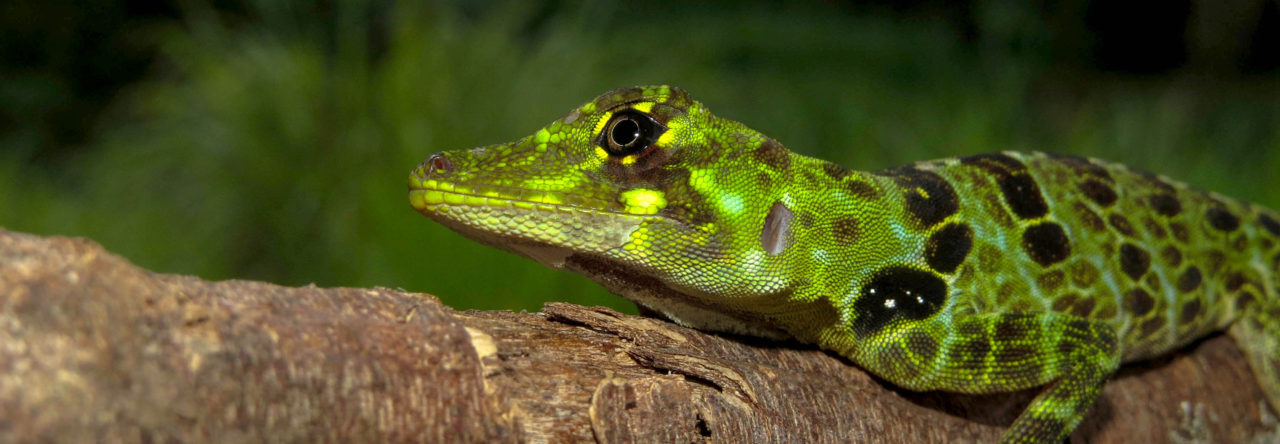
Brown anole photo by Dan Warner.
Although there is a vast literature on how resource availability affects physiology, behavior, and reproduction (among many other things), we know surprisingly little about the composition of individual diets in nature. To truly know whether you are what you eat, you have to understand what it is you are eating. Dan Warner from the University of Alabama at Birmingham set out to do just that with some very interesting preliminary data on an island population of brown anoles in Florida. He trapped potential prey in two very different habitat types on the island: interior forest and open shoreline. The shoreline had mostly marine-sourced prey items (amphipods), whereas the forest had more terrestrial insects, like roaches. Dr. Warner then wanted to know if these differences in diet would affect body composition of anoles in those habitats.
The methods here are the best part. Dr. Warner used Quantitative Magnetic Resonance (QMR) technology, typically used for rodent lab animals, to determine body composition. He found that there was a very strong match between the QMR estimates of lean and fat mass compared to chemical carcass analysis of the same individuals. And, the QMR measures only take about 5 minutes to do! This non-invasive, non-lethal way to estimate body composition has huge implications for studies that seek to tie those characteristics to components of organismal fitness, namely survival and reproductive success. It doesn’t work to track survival on individuals sacrificed for chemical carcass analysis. He also suggests that this now-validated method will be important to test whether typical measures of body condition (such as mass-length residuals) are actually good estimates. It doesn’t sound good for our typical measures of condition, but he will tell that story soon!
Returning to diet’s effect on body composition, the results showed that lizards in the interior of the island had more fat mass and less lean mass than lizards found on the shoreline. He plans to continue the research by repeating it on replicate islands with similar habitat types, as well as look at long-term consequences of variation in body composition. This new approach will open the door for fascinating research to come, so stay tuned!
- Exercise and the Immune System in Green Anoles - January 6, 2021
- Exercise Can Kill You (If You’re an Anole)! - May 10, 2019
- Leptin Mediates Tradeoffs in Green Anoles - February 2, 2019


Leave a Reply